Advances in Photocatalytic Hydrogen Generation and CO2 Reduction
A special issue of Materials (ISSN 1996-1944). This special issue belongs to the section "Catalytic Materials".
Deadline for manuscript submissions: closed (20 December 2023) | Viewed by 1803
Special Issue Editors
Interests: photocatalysis; electrocatalysis; photo-electrocatalysis; CO2 reduction; water splitting; chemical energy conversion; artificial photosynthesis
Special Issues, Collections and Topics in MDPI journals
Interests: metal nanomaterials; single-atom catalytic materials; photocatalytic; electro-catalysis; thermo-catalysis
Special Issues, Collections and Topics in MDPI journals
Special Issue Information
Dear Colleagues,
Solar energy conversion and utilization have undergone great development in the past few years. The study of novel photocatalytic materials and their surfaces has led to many exciting advancements in the field of catalysis. Photocatalysis is an emerging technique for converting solar energy into renewable and storable chemical energy in chemical bonds. Solar-driven hydrogen generation and CO2 reduction is one of the most promising techniques for future energy consumption, and various new methods and sustainable efforts have been developed. Thus far, a great number of homogeneous systems, nano-systems, and polymer systems have been proven effective in photocatalytic reactions due to their unique catalytic properties and the ideal bandgap of the material structure, acting as a milestone for future studies. The effective development of photocatalytic activity is enabled by the tunable electronic structure, ideal bandgap, flexibility for doping and defect formation, and the presence of highly active sites in novel photocatalytic materials. There are many promising materials that will continue to help in addressing the current worldwide energy issue.
This Special Issue aims to summarize the progress and advances in the development of new photocatalysts and photocatalytic systems for hydrogen generation and CO2 reduction. You are invited to submit contributions presenting your recent research articles, reviews, and brief communications revealing new trends in the research on photocatalytic hydrogen generation and CO2 reduction. Hence, immense challenges and opportunities remain in realizing this technology for large-scale practical applications in the decontamination of the environment and the generation of clean energy.
Dr. Heng Rao
Dr. Zhiyuan Wang
Guest Editors
Manuscript Submission Information
Manuscripts should be submitted online at www.mdpi.com by registering and logging in to this website. Once you are registered, click here to go to the submission form. Manuscripts can be submitted until the deadline. All submissions that pass pre-check are peer-reviewed. Accepted papers will be published continuously in the journal (as soon as accepted) and will be listed together on the special issue website. Research articles, review articles as well as short communications are invited. For planned papers, a title and short abstract (about 100 words) can be sent to the Editorial Office for announcement on this website.
Submitted manuscripts should not have been published previously, nor be under consideration for publication elsewhere (except conference proceedings papers). All manuscripts are thoroughly refereed through a single-blind peer-review process. A guide for authors and other relevant information for submission of manuscripts is available on the Instructions for Authors page. Materials is an international peer-reviewed open access semimonthly journal published by MDPI.
Please visit the Instructions for Authors page before submitting a manuscript. The Article Processing Charge (APC) for publication in this open access journal is 2600 CHF (Swiss Francs). Submitted papers should be well formatted and use good English. Authors may use MDPI's English editing service prior to publication or during author revisions.
Keywords
- photocatalysis
- hydrogen
- water splitting
- CO2 reduction
- solar energy
- energy conversion







